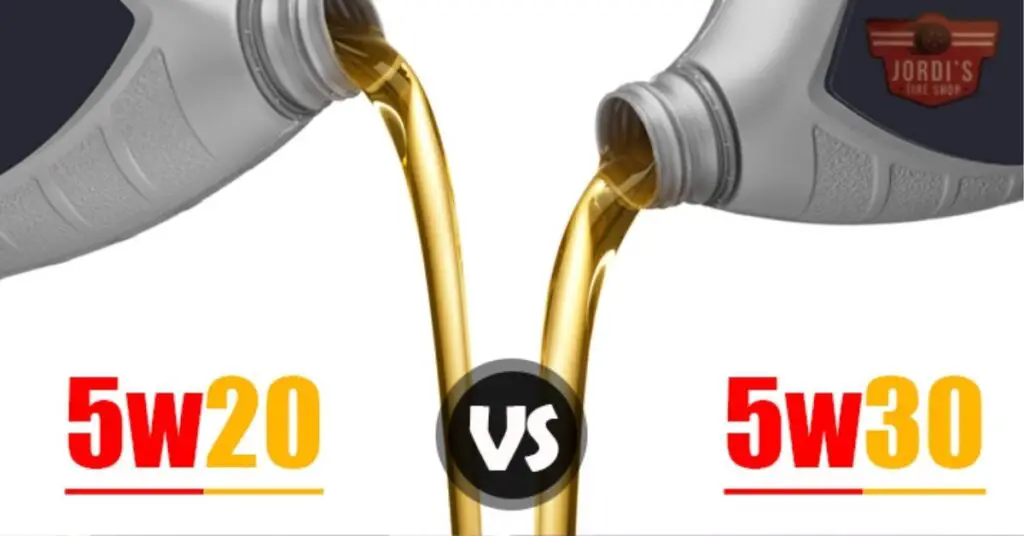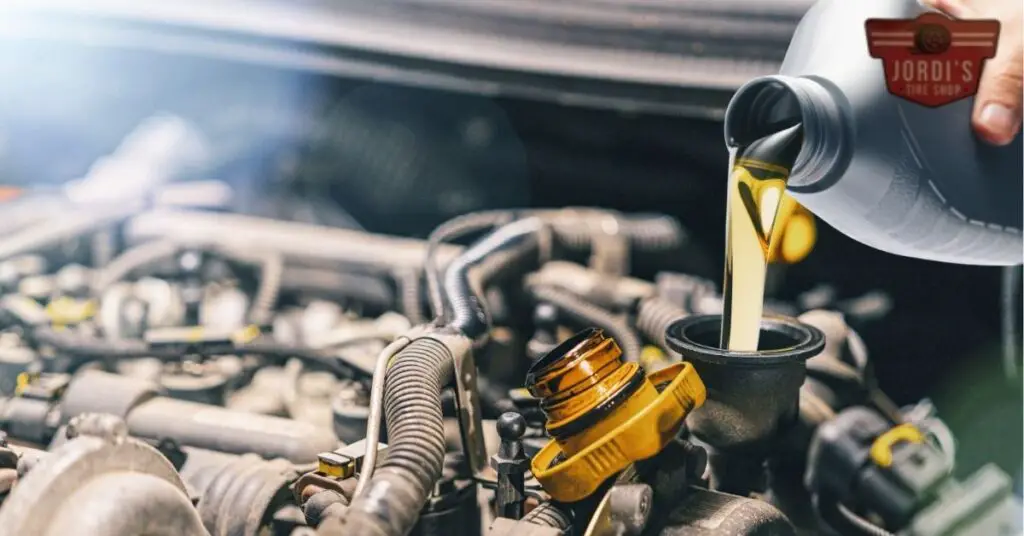Ever found yourself in a pinch, staring at bottles of 5w30 and 5w20 motor oils, wondering if you can mix them? It’s a common question that often leaves car owners scratching their heads. You’re not alone, and we’re here to help you navigate this often confusing topic.
Understanding Motor Oil Grades: 5w30 and 5w20

Let’s dive deeper into the understanding of motor oil grades, specifically 5w30 and 5w20. Unravel the mystery behind these numbers and discover how they can determine the longevity and efficiency of your vehicle.
Breaking Down the Numbers: The Meaning Behind 5w30 and 5w20
First, let’s break down what these seemingly cryptic numbers mean. The initial number, followed by the ‘W’ – standing for ‘Winter’ – indicates how well the oil flows at low temperatures. As such, both 5W20 and 5W30 oil start at a viscosity index of 5 during colder weather, enabling them to easily circulate even in freezing conditions.
Conversely, the numbers following the ‘W’ represent the oil’s viscosity at 100 degrees Celsius (212 degrees Fahrenheit). Here, higher numbers mean thicker oil at higher temperatures. So, 5w30 oil signifies it being thicker at elevated temperatures than 5w20.
Climate and Oil Grades: How Weather Factors Into Your Choice
Moving onto climate considerations in relation to oil grades, it’s paramount to note that colder environments increase the need for lower-viscosity oil. For instance, 5w30 oil flows more smoothly at -30 degrees Celsius than 10w30, signifying its greater suitability in harsh winter conditions.
Nevertheless, hotter climates introduce a different equation, as vehicles under intense heat can benefit more from higher-viscosity oils like 5w30. This oil can effectively maintain its viscosity at higher engine operation temperatures providing better protection for your engine.
Remember, oil isn’t just oil – it’s a key determinant in your engine’s longevity and performance. Always choose wisely according to your car engine’s needs and the weather conditions where you drive most.
The Pros and Cons of Mixing 5w30 and 5w20
This section hones in on the exact advantages and potential pitfalls associated with combining these two separate grades of motor oil.
Upsides to Combining 5w30 and 5w20
Contrary to popular belief, mixing 5w30 and 5w20 doesn’t automatically spell trouble. In fact, it sometimes offers a variety of benefits. For instance, merging these two types of motor oils often results in efficiently balanced viscosity. In simpler words, your engines gets to enjoy the optimal thickness level needed for smooth operation. Also, blending these oils can prove beneficial if you’re caught in a pickle and don’t have access to the exact engine oil needed.
Risks That Might Come With Mixing
While not always harmful, blending 5w30 and 5w20 might pose risks under certain circumstances. It’s important to remember that manufacturers specify oil type for a reason: to sustain optimal engine performance. Deviating from these specifications may lead to lessened performance, or worse, engine damage. Colloquially speaking, if you’re playing fast and loose with mixing oils, you’re essentially gambling with your engine’s health. The verdict? It’s always apt to consult with an experienced mechanic before taking the leap.
Real Experiences: Stories from Car Users

To help bring balance to the rousing discussion around using the combo of 5w30 and 5w20 motor oils, we’ll provide authentic narratives directly from the horse’s mouth, that is, from actual automobile users. These experiences are grouped into success stories and accounts of failures, helping us have a comprehensive understanding of the topic at hand.
Instances of Success with 5w30 and 5w20 Combo
Many car users have sworn by mixing 5w30 and 5w20 oils, claiming important improvement in their vehicles’ performance. For instance, Robert, a car enthusiast, recounts that his ride, a ’90s Mustang, started running smoother after adopting a mixture of these oils. He also observed that the oil pressure was constant, significantly reducing the wear and tear on the engine.
In a similar vein, Mary, a weekend racer, reported her off-road truck has never been in a better shape after ending up with a mix of the two oil grades at a local garage during an oil change. She noticed an increase in her vehicle’s overall operational efficiency and highlighted fewer instances of overheating and better fuel economy.
Cases of Failure: What Went Wrong?
Though several anecdotal accounts of success lie in favor of the motor oil blend, there are cases recounting a not-so-rosy reality. For example, Andrew, a car user, narrates how his almost brand new sedan started showing signs of trouble post blend. He had frequent engine knocking issues, and even though using the same synthetic blend, he eventually had to replace his engine, an ordeal that was both costly and mentally exhausting.
Likewise, Samantha, who was using the oil blend in her older-model hatchback, chronicled a consistent decrease in the engine’s performance until her car shut down entirely on a long road trip. The mechanic’s diagnosis revealed excessive carbon deposits in the engine due to the mixed oils, leading to a costly engine repair. In both cases, the vehicles significantly deviated from the performance standards renewable to regular oil change with the prescribed oil grade by manufacturers. The instances serve as a stern reminder that even though mixing oils can offer a temporary solution, it’s not a sustainable long-term practice.
Advice from Car Manufacturers and Oil Companies

Official Guidelines on Mixing Motor Oils
Manufacturers and oil companies tend to have uniform advisories about the mixing of motor oils. Their manuals generally indicate the type of oil appropriate for exact models, providing a directive on viscosity rating. In situations where the suggested oil isn’t available, these references sometimes endorse the combination of two different motor oil viscosity grades, including the mix of 5w30 and 5w20 oils. But, it’s emphasized that this is considered an interim solution, particularly for vehicles operating in extreme weather conditions. It’s wise to promptly replace the blend with the manufacturer’s recommended oil grade, restoring the engine’s optimal operational conditions.
What Experts Say About the 5w30 and 5w20 Blend
About the blend of 5w30 and 5w20 oil, the consensus among automotive experts may seem tangled. Some pros suggest that combining these oils can create an intermediate viscosity that could potentially benefit your engine’s operation. Their argument is anchored in the observation that the blend can offer a viscosity range that suits diverse temperature conditions, particularly if your vehicle faces varied climates. They stipulate that it could be beneficial, especially if you’re facings a sudden shift from a hot to a cold environment or vice-versa.
Conversely, other industry professionals express reservations about this practice. They highlight the potential risks, underscoring the repercussions of deviating from the manufacturer’s specifications. Their concerns stem from empirical data linking this blend to reduced engine performance and potential engine damage. They further note that any presumed benefits o mixing these motor oils would be short-term and could inadvertently lead to costly repairs in the long run. Eventually, their advice circles back to the fundamental fact: following the manufacturer’s guidelines is pivotal to maintaining your vehicle’s engine health.
Remember, these viewpoints from experts aim to guide and inform your decision. But, it’s still crucial to consult with a trusted mechanic or car dealer exact to your vehicle’s make for personalized advice.
Practical Tips: Ensuring Optimum Car Performance

Let’s explore ways to ensure your vehicle works at its peak. This involves knowing when to stick to the prescribed motor oil and understanding when you might need to contemplate mixing 5w30 and 5w20.
Choosing the Right Oil for Your Vehicle
First, it’s essential that the oil you choose for your car is based on your car manufacturer’s specifications found in the vehicle manual. The specificity of oil type, primarily the viscosity, depends on the operating temperature of your car’s engine. Automakers establish these guidelines after conducting rigorous tests to identify the optimal oil type for each model’s engine, eventually ensuring that the engine operates efficiently and effectively.
For instance, if your car’s manual suggests a 5w30 grade, refrain from using a 5w20, with the primary differences being boundaries of viscosity and temperature tolerance. Also, climate plays a important role in your choice of motor oil. A colder environment could necessitate a lower-viscosity oil like 5w20, facilitating better flow within the engine. Conversely, hotter conditions might demand a higher-viscosity oil like 5w30, offering improved engine protection.
When You Might Need to Mix 5w30 and 5w20
There might be circumstances where mixing two different grades of motor oil becomes necessary. Instances might range from emergencies where you lack the proper oil grade to extreme weather conditions where adjusting the oil’s viscosity can bring about smoother engine operation.
Nevertheless, always remember that mixing 5w30 and 5w20 is merely a temporary measure. While it could potentially provide a balanced viscosity, it’s not something you’d want to practice regularly since it could lead to decreased engine performance and potential engine damage. Consult with an experienced mechanic who can guide you on the best step forward, taking into account your unique situation and vehicle requirements.
Always prioritize adhering to your car manufacturer’s guidelines. Optimal engine health isn’t just about the here and now, it’s about the longevity of your vehicle. Make certain any decision you make is in the best interest of your vehicle in the long haul.
Conclusion
So, you’ve seen that mixing 5w30 and 5w20 isn’t as black and white as it might seem. Both oils have their unique characteristics and are suited to different climates and vehicle needs. Mixing them can sometimes offer a balance in viscosity but it’s not without risks. You’ve read about car owners who’ve experienced both success and failure with this mix. Remember, manufacturers and oil companies often provide exact guidelines for each car model and these should be your primary reference. While it’s possible to mix these oils in a pinch, it’s not a long-term solution. Always prioritize your engine’s health and consult with an experienced mechanic when in doubt. And don’t forget, your vehicle’s manual is your best friend when it comes to understanding what your car needs to perform at its best.
Can I mix 5w30 and 5w20 motor oils?
Yes, you can mix 5w30 and 5w20 motor oils. Mixing these oils can provide benefits like achieving a balanced viscosity for smoother engine operation and providing a solution in emergencies when the exact oil is unavailable.
What are the risks of mixing 5w30 and 5w20 oils?
Deviating from manufacturer specifications by mixing 5w30 and 5w20 motor oils can lead to diminished performance or even cause engine damage. Always consult with a mechanic before deciding to mix oils.
Is it better to use 5w30 or 5w20 motor oil?
The choice between 5w30 and 5w20 depends on your vehicle’s requirements and your local weather conditions. In colder climates, 5w20 may offer better flow, and in hotter conditions, 5w30 would provide more engine protection.
What are the manufacturers and oil companies saying about mixing motor oils?
Manufacturers and oil companies generally provide specific oil recommendations for each car model. Some also endorse the idea of mixing different oil.grade as a temporary solution under extreme weather conditions but suggest reverting back to the recommended grade as soon as possible.
What are some tips for ensuring optimal car performance?
To ensure optimal car performance, it is crucial to adhere to manufacturer’s specifications and guidelines for motor oil usage. In situations where mixing 5w30 and 5w20 may be necessary, it should be temporary. Always refer to your vehicle’s manual and consult a trusted mechanic for personalized advice.
Related Posts:
- Understanding 7/32 Tread: Essential Guide for Safer Driving & Tire Maintenance
- Dragy Performance Meter Review: Boosting Your Car’s Capabilities?
- Unraveling the Mystery of Bulletproof Tires: Key Features, Popular Models, and Buying Guide
- Understanding & Fixing Jeep’s ‘Stop Start Not Ready – Battery Protection Mode’ Message
- Unsettling Popping Noise in Your Car’s Front End? Here’s What It Means
- Can You Mix 5W30 and 5W20 Motor Oils? Debunking the Myths for Car Owners
- Decoding AWD System Malfunctions: Why is My Car Stuck in 2WD Mode?








